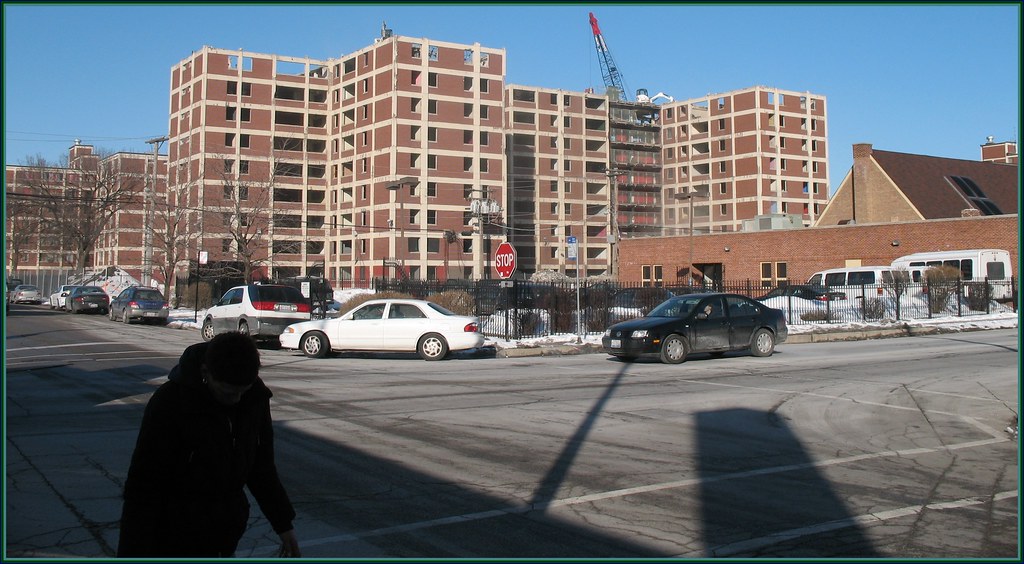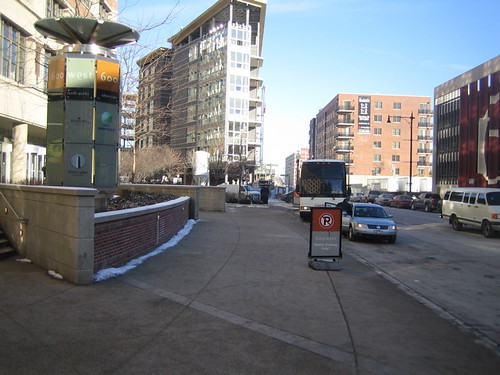
A couple of weeks ago, Drew posted about StimulusWatch, a site that lists all of the local projects in the United States that have been publicly announced as candidates for federal stimulus funds and lets the public vote on each project's merit. As luck would have it, my job involves researching construction projects, and I've been spending almost a month now combing through SW for several hours a day, looking for potential building projects. From what I've observed, it seems doubtful that the site will have any major impact on how stimulus dollars are spent ("Pork" is probably the most-used word in the very angry, uninformed comment sections no matter what state or city you're viewing). But SW does provide an opportunity for people working on the local level to gauge how their neighbors feel about a wide variety of public projects and services.
In the Energy category, for instance, one can see how effective the green movement has been on public opinion. Whereas a few short years ago Energy projects would undoubtably have been fewer in number and much lower in popularity, the Energy category seems to be one of the most popular, regardless of state or city, with the +/- ratio around half and half -- about the same as the ratio for Streets & Roads! Folks in small towns seem just as likely now to favor energy retrofits to their town hall and the addition of solar panels to school and library rooftops as urban and suburban Americans. People are still skeptical of hybrid vehicles, though, with many requests for money for hybrid or alternative energy-fueled municipal fleets meeting staunch resistance. But overall, the mainstreaming of energy efficiency efforts seems to have been a wide success.
It is seeing this shift that makes me hopeful that we can reverse what is undoubtedly the ugliest trend that I've noticed from coast to coast: the outright rejection of Housing projects. Items with "senior" or "demolition" in the title notwithstanding, Housing projects receive negative vote ratios so consistently that it's as if there was some sort of unspoken rule barring people from voting anything but "No." Even more disturbing than the negative vote ratios are the comments left by mostly anonymous posters at the bottom of each page. Affordable and public housing is called some terrible things, and there is more than anyone's fair share of racism, classism, and willful ignorance. Public housing in America, it is plain to see here, has still not recovered from the havoc wreaked by the slum-clearance-brought tower projects of the 1950s and 60s. Much like with Wall Street, American public housing is experiencing a crisis of confidence.
 It would seem that, as much as we need the money to build units for the thousands of people who have lost or are about to lose their homes, it might not be a terrible idea to spend some of HUD's budget on increasing public awareness of the different kinds of housing available nowadays. Stigma attached to terms like "public housing" and "affordable housing" undoubtedly hampers efforts to create sustainable mixed-use communities, a contemporary goal of most major urban housing authorities, by keeping middle- and upper-income residents whose presence facilitates that integration at bay. The focus for housing advocates and agencies is no longer on concentrating poverty, but on economic integration -- and if it's not, it damn well should be. Without changing the conversation, attempts to tackle America's shortage of affordable housing will likely be uneven at best.
It would seem that, as much as we need the money to build units for the thousands of people who have lost or are about to lose their homes, it might not be a terrible idea to spend some of HUD's budget on increasing public awareness of the different kinds of housing available nowadays. Stigma attached to terms like "public housing" and "affordable housing" undoubtedly hampers efforts to create sustainable mixed-use communities, a contemporary goal of most major urban housing authorities, by keeping middle- and upper-income residents whose presence facilitates that integration at bay. The focus for housing advocates and agencies is no longer on concentrating poverty, but on economic integration -- and if it's not, it damn well should be. Without changing the conversation, attempts to tackle America's shortage of affordable housing will likely be uneven at best.For anyone interested in transportation issues (Transit, Airports, Streets & Roads, Amtrak), Community Development, Energy, Housing, Public Safety, Schools, or Water infrastructure, StimulusWatch provides an opportunity to better understand the challenges facing those fields. Whether you're for or against the federal stimulus package, that opportunity shouldn't be missed.
(Photo from Flickr users TheeErin and andyandrew. The original full-sized versions can be viewed by clicking the photos.)

1 comment:
I couldn't agree more on public housing, though the crisis has been really growing since the 80s, when Reagan Era HUD budget cuts combined w/the crack epidemic left the projects particularly vulnerable to blight and violence.
I write about public housing quite a bit at Poverty in America in an effort to change the conversation, raise awareness, etc. Slow going, that's for sure!
Leigh
Post a Comment